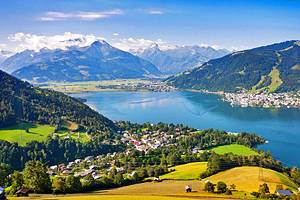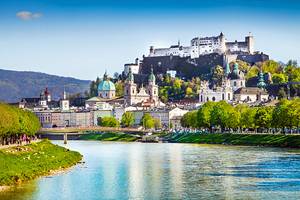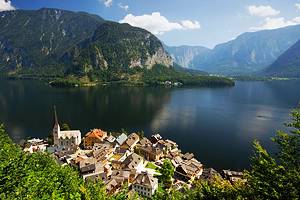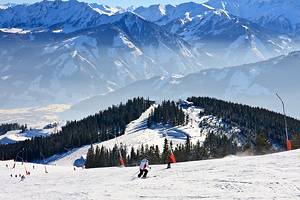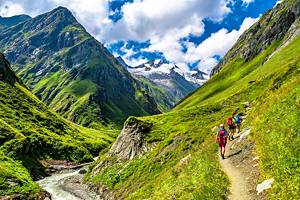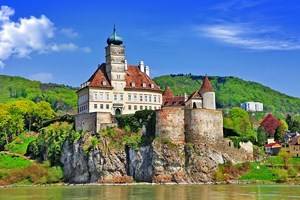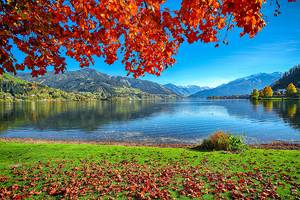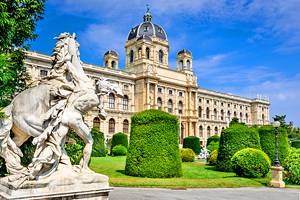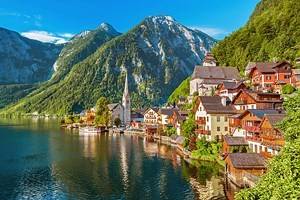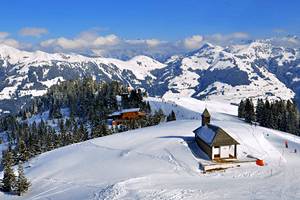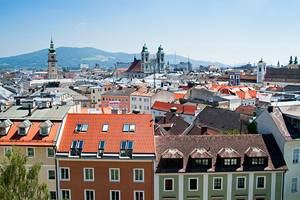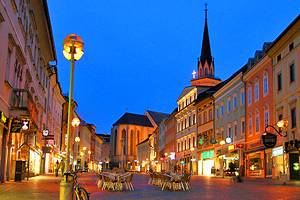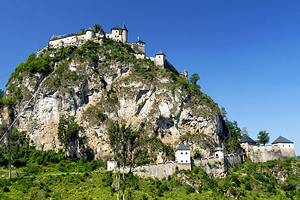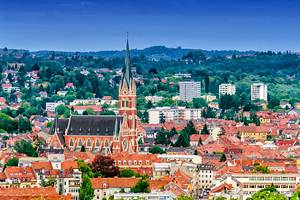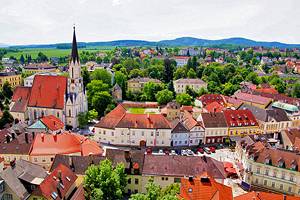Tourist Attractions in Hallstatt & along the Hallstätter See
Situated on the shores of the idyllic Hallstätter Sea, the tiny community of Hallstatt is perhaps the most beautiful example of the many quaint traditional villages waiting to be explored in Upper Austria.
Linked by road to the cities of Salzburg and Graz, Hallstatt's beauty is matched by that of its lake, both of which are included in the Hallstatt-Dachstein/Salzkammergut Alpine UNESCO World Heritage Site.
The Hallstätter Sea - 8.5 kilometers long and up to two kilometers wide - has long drawn tourists for its excellent fishing and boating, as well as its stunning scenery. Between the town, the lake, and the surrounding mountains, visitors will find plenty of things to do in Hallstatt.
To learn more about why the area is one of the best places to visit in Austria for a vacation, be sure to read our list of the top attractions in Hallstatt and the Hallstätter See.
The Hallstätter See
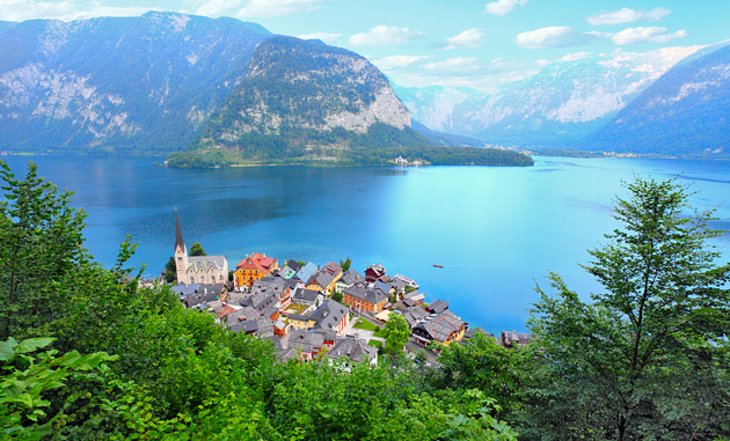
The Hallstätter See, a spectacular mountain lake in Austria's Salzkammergut region, lies at the northern foot of the mighty Dachstein mountain range.
Some eight-and-a-half kilometers long and between one to two kilometers wide, the lake is up to 125 meters deep and is surrounded by steep, wooded slopes that give it a fjord-like character. Of the lovely villages that dot its shoreline, the most popular are Obertraun; Steeg; and Hallstatt, with its old church and market square.
The region has been deemed so important that it has been designated the UNESCO World Heritage region of Hallstatt Dachstein Salzkammergut. The Hallstätter See isn't just stunningly beautiful, it's also the most significant lake in the Alps in terms of history. And thanks to its many easily accessible beaches and stunning mountain scenery, it has also long been a draw for artists and outdoor enthusiasts, as well as those simply wanting some peace and quiet.
Popular activities include fishing, diving, and boating on traditional flat-bottomed boats. Or you can rent an electric or pedal boat to explore the lake (no motor boats are allowed).
The lake is also ringed by many excellent biking and hiking trails, some of which head up into the surrounding mountains. The region is also a habitat for a variety of diverse flora and fauna. These include many rare species, such as native orchids in the wetlands and moors in the south and north.
Hallstatt's Old Town and Market Square
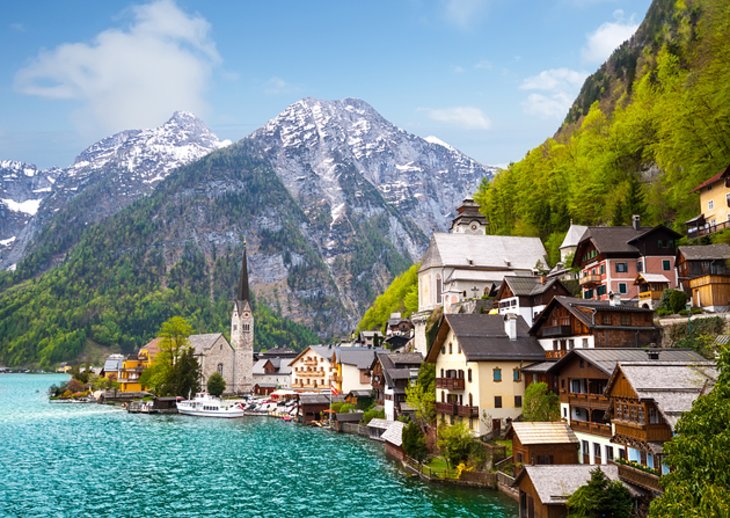
The little market village of Hallstatt, one of the most attractive places to visit in the Salzkammergut, is idyllically positioned on the southwest shore of the Hallstätter See.
Taking its name from the nearby salt mine, the village clusters around its charming Marktplatz, surrounded by traditional houses, their balconies draped in flowers. Shops and terraced cafés line the square, and a highlight is the elegant Holy Trinity statue.
One of the most famous views of the old village is from the popular Photo Point in the Römisches district, just a short walk away from Marktplatz. In the center of town is the 19th-century Evangelical Church of Hallstatt, its tall, slender spire a lakeside landmark.
Hallstatt Salt Mine
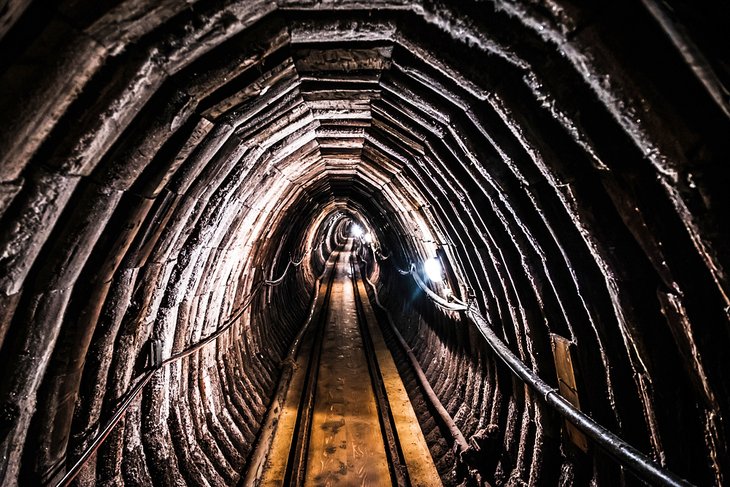
Really a number of excellent attractions in one, Hallstatt Salt Mine (Salzwelten Hallstatt) lies high above the town on the 1,030-meter-tall Salzburg (Salt Mountain). The star attraction, however, is the 7,000-year-old salt mine itself.
It's accessible by cable car or a three-minute journey aboard the funicular railway. Highlights include the story of the preserved corpse found here in 1734, known as the "Man in Salt," along with fascinating displays of ancient (and modern) mining methods. A new attraction here is the Salt Manufacture, which offers tours and a glimpse at how gourmet salt products are made.
Be sure to seize the opportunity to visit the Subterranean Salt Lake. Kids of all ages will want to whizz down the 64-meter-long Mega-slide, Europe's longest wooden slide (all of it underground).
Address: Salzbergstraße 21, 4830 Hallstatt
Official site: www.salzwelten.at/en
Hallstatt Skywalk
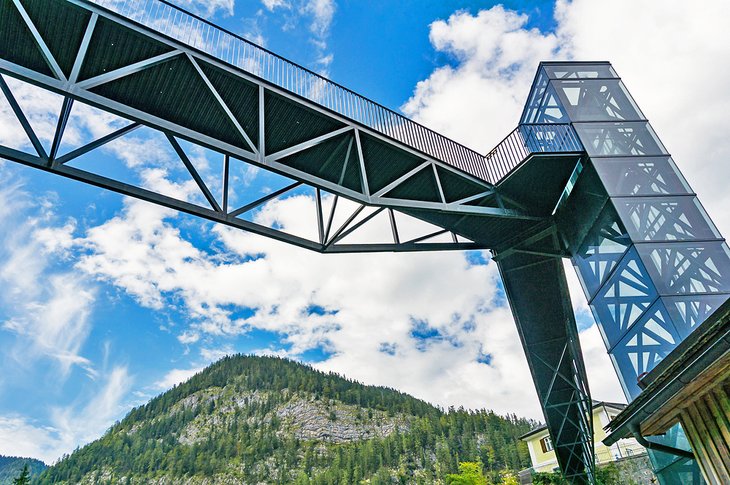
The salt mine is well worth visiting for the wonderful views from the Halstatt Skywalk alone. This breathtaking attraction consists of a viewing platform extending over a sheer drop, with Hallstatt itself some 350 meters directly below.
Even more spectacular views can be enjoyed from the historic Rudolf's Tower (Rudolfsturm). This old fortification - accessible only by footbridges - was built to defend the mines against invaders, and now serves as a restaurant and observation tower.
Address: Hallstatt Salt Mine, Salzbergstraße 21, 4830 Hallstatt
Official site: www.salzwelten.at/en/hallstatt/skywalk-world-heritage-view/
Dachstein Mountains and the Five Fingers
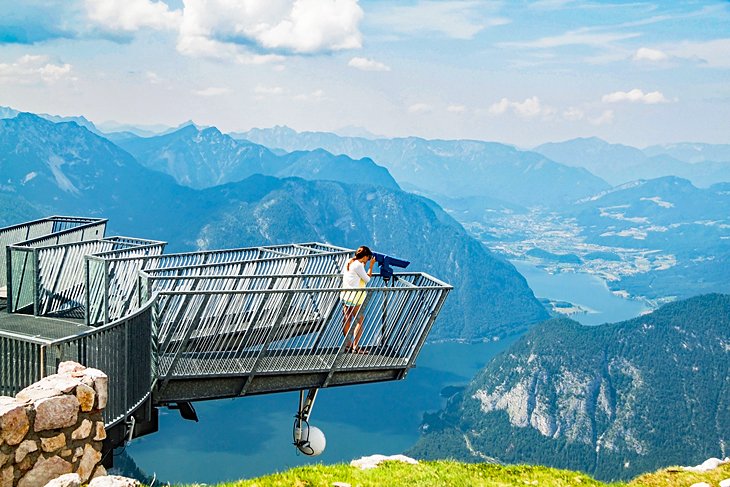
The Dachstein Mountains, and in particular Dachstein Salzkammergut, are a must-visit during a sightseeing trip to Austria. Included in the UNESCO World Heritage Site designation, it consists of a series of mighty peaks ranging from 2,000 to 3,000 meters in height, the highest being the 2,995-meter Hoher Dachstein.
Popular in winter for skiing and in summer for hiking, the mountains are famous for their large (yet shrinking) glaciers, including the Grosse-Gosau and the Hallstätter glaciers. A number of cable cars ascend to the upper reaches, most giving access to Alpine hiking trails.
All of them lead to spectacular views, often from viewing platforms. The most dramatic of these is the Five Fingers, a series of five long, meter-wide platforms that spread like a hand hovering in mid-air over a 122-meter drop.
Each platform is a different design and offers a different perspective: one is entirely of glass and another one frames the views through an oversized Baroque picture frame. Sign boards on the trail detail the local geology and nature.
Official site: www.dachstein-salzkammergut.com/en/
Dachstein Caves
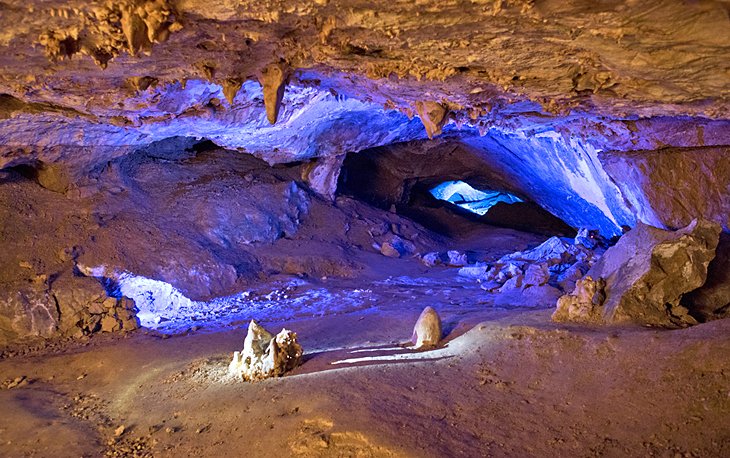
The mountains are also famous for the spectacular Dachstein Caves. This huge network of caverns is up to 1,174 meters deep and is among the most impressive in the Eastern Alps. It's an underground world of ice sculptures, gigantic ice curtains, and huge icicles.
Highlights include the Dachstein Giant Ice Cave (Rieseneishöhle), with its many great caverns and magnificent frozen waterfalls. If you can, try to visit during one of its regular underground music concerts. Equally impressive, the Mammoth Cave (Mammuthöhle) consists of huge pipe-shaped galleries formed by an ancient underground river.
Before and after your 90-minute guided tour, learn more about the effects of climate change on this region at the exhibition, as well as see geological features on the Experience trail. Traveling with kids? They'll not want to miss the adventure cave.
Official site: www.dachstein-salzkammergut.com/en/
Catholic Parish Church and Ossuary Chapel
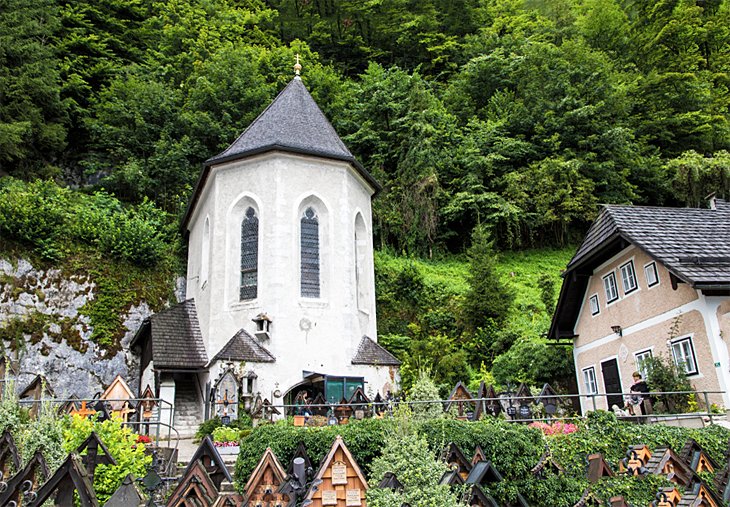
The 15th-century Roman Catholic Parish Church in Hallstatt - the Ascension of Our Lady Church (often erroneously called the Church of the Assumption) - is worth the short climb for several reasons, not least of which are the splendid views of the town and lake from its cemetery.
But the church itself contains some remarkable art, plus three fine winged altars and Late Gothic frescoes from around 1500.
If visiting as part of a tour, you'll no doubt be told the fascinating story of an audacious art theft. In the 1980s, four Gothic paintings from the small altar of Mary were torn from their places and stolen. After years of searching, they were recovered and, in the spring of 2018, returned to their original places on the altar.
The most unusual feature here is in the 12th-century chapel of St. Michael. Here, the Charnel House (Karnel) is an ossuary displaying one of the largest and best collections of painted skulls known to exist. The practice of digging up remains when cemeteries ran out of space and storing them in ossuaries was not unusual, but the practice of painting them with flowers and identifying them with names and dates is limited mostly to Alpine regions. Few of these charnel houses have survived.
Address: Kirchenweg 40, 4830 Hallstatt
Halstatt Museum
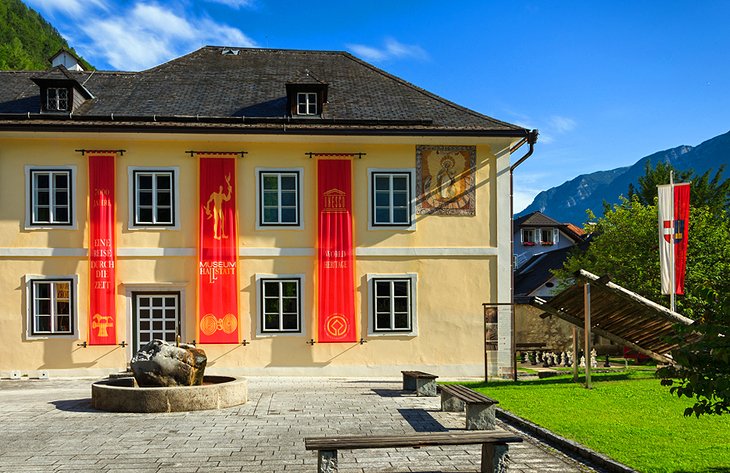
Hallstatt is home to the excellent Halstatt Museum (Museum Hallstatt). The museum houses fascinating displays dealing with the rich history of both the village and its surroundings over the past seven millennia, from the earliest days of its salt mines to its UNESCO World Heritage Site status.
Other exhibits deal with later settlers such as the Celts, while the Studio of Epochs is a hands-on multi-media display of tools and artifacts from the village's history.
Address: Seestraße 56, 4830 Hallstatt
Prehistoric Necropolis on the Salzberg
Hallstatt's other museum, the Prehistoric Necropolis, is also worth a visit. Built over an ancient burial ground, the attraction provides an up-close look at ancient burial places dating back between 5000 BC and 1000 BC.
All told, more than 4,000 people were known to have been buried here. Buried with them were numerous interesting artifacts, including grave furnishings from the Iron Age.
Admont Abbey
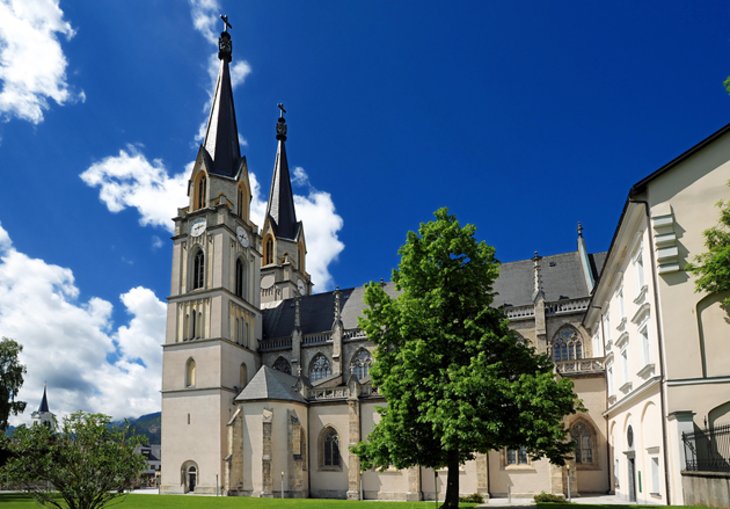
The old resort town of Admont is popular largely due to its Benedictine abbey, founded in 1704 and later rebuilt with the addition of a park and a Neptune fountain.
A highlight of Admont Abbey (Stift Admont) is the Abbey Church. Dominated by 70-meter-tall twin towers, the church is home to a carved nativity group from 1755, along with a number of exquisite embroidered tapestries.
The most beautiful part of the abbey, however, is its sumptuously decorated Baroque Library. Here, you'll see many ceiling frescoes, as well as statues representing the Four Last Things (heaven, hell, death, and judgment), and the larger-than-life statues of prophets Moses and Elias and apostles Peter and Paul.
The library - the largest monastery library in the world - contains more than 100,000 volumes, including 1,100 manuscripts and 900 early printed books. Also of note is the Natural History Museum with its large collection of insects, birds, mammals, and minerals. (Guided tours are available.)
Address: Kirchplatz 1, 8911 Admont
Official site: www.stiftadmont.at/en/
Hoher Krippenstein
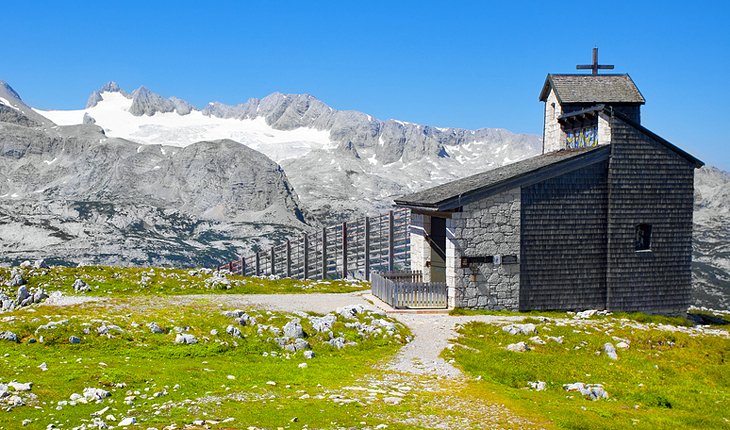
From the Dachstein Caves, the cableway continues to the upper station, Berghaus Krippenstein, on the 2,109-meter Hoher Krippenstein. Fifteen minutes' climb above the cableway stands a small chapel built in 1959 with a bell commemorating a group of 13 students and teachers who died here in 1954.
Highlights of your ascent include the wonderful Welterbespiral. This spectacular viewing platform resembles a metallic ship and offers incredible panoramic views over the Dachstein mountains (comfortable sun loungers encourage you to linger).
Afterwards, it's an easy hike back to the Five Fingers viewing platform. Alternatively, you can spend time exploring the Heilbronn Circular Trail.
St. Wolfgang
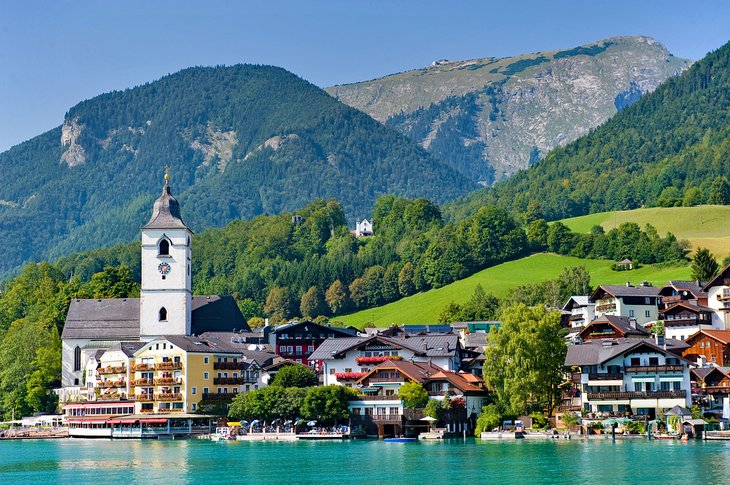
The tiny town of St. Wolfgang (St. Wolfgang im Salzkammergut) is a popular health resort on the northeastern side of the Wolfgangsee, 36 kilometers northwest of Hallstatt.
The town is famous throughout Europe for its White Horse Inn (Weisses Rössl). Owned by the same family since 1712, the inn has been the subject of an operetta by Ralph Benatzky that's also been adapted for film.
A walk around the town's pleasant streetscape reveals the charm of the Late Gothic Pilgrimage Church of St. Wolfgang (Pfarrkirche St. Wolfgang). Set high on a terrace above the Wolfgangsee, it was rebuilt between 1429-77 and painted in Baroque style in the late 17th century. The tower was given its bell-shaped dome in the 18th century.
Interior highlights include the Pacher Altar. This artistic masterpiece dates from 1481 with a superbly carved central section portraying the Virgin Mary kneeling before her Son in intercession for Mankind; beside them stand St. Wolfgang and St. Benedict.
The town is also the main station for the Schafberg Railway (Schafbergbahn), a six-kilometer-long cogwheel rail route that runs up Schafberg Mountain.
Bad Aussee
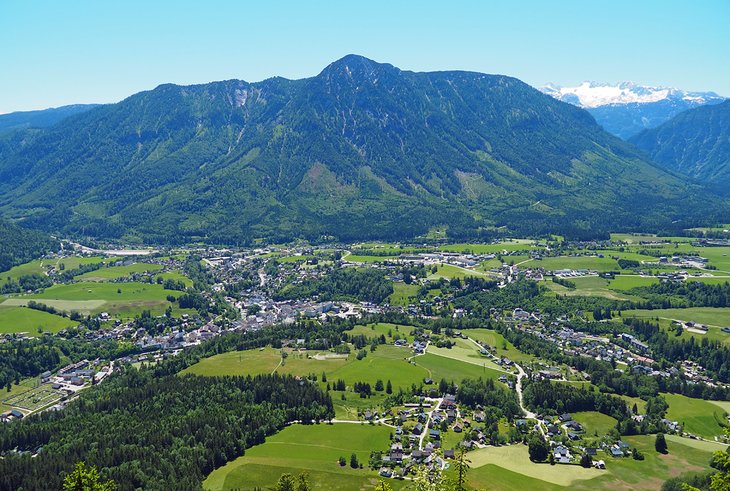
About 17 kilometers west of Hallstatt, the old market town of Bad Aussee has, for centuries, been the economic and cultural center of the Styrian salt-producing region. This picturesque town on the confluence of the River Traun's three tributaries is noted for its modern health resort and saltwater spa with its Kneipp treatment. It's also a popular winter sports destination.
Historic points of interest include the 13th-century Parish Church of St. Paul with its small sacrament house added in 1523, and the St. Paul Church Virgin Mary Statue, one of the region's most beautiful works of art made in 1420.
Another church of note is the Bad Aussee Spitalskirche. This impressive Gothic structure was built in 1412 with an octagonal tower and two splendid 15th-century winged altars, along with a shrine to the Holy Trinity.
The town also makes a great place from which to venture out and explore the surrounding countryside. Visit from mid-May to mid-June, and you'll be rewarded with the stunning sight of a sea of flowering narcissi.
The Altausseer See
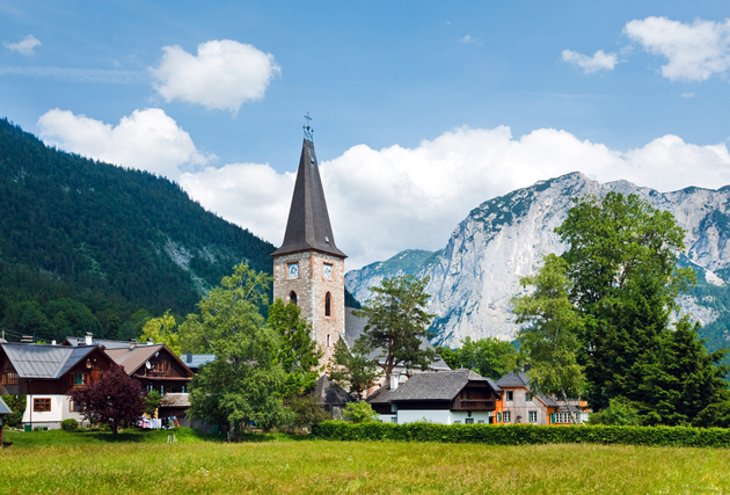
To the north of Bad Aussee lies the Altausseer See, a three-kilometer-long by one-kilometer-wide lake found in a magnificent setting between the southwest faces of the Totes Gebirge.
Sightseeing opportunities include the small town of Altaussee, popular for its spa and winter sports activities and famous as the site of Austria's largest salt deposit, the Altaussee Salt Mine, and home to a fascinating museum offering guided tours of the mines.
Of particular interest are the museum's fascinating exhibits dealing with the mine's wartime use as a hiding place for art treasures stolen by the Nazis.
Also of interest is the panoramic road leading north from Altaussee via the Loserhütte all the way to the Augstsee. From the parking lot at the Loserhütte, it is an hour's climb to the summit of the 1,838-meter Loser with its superb views.


